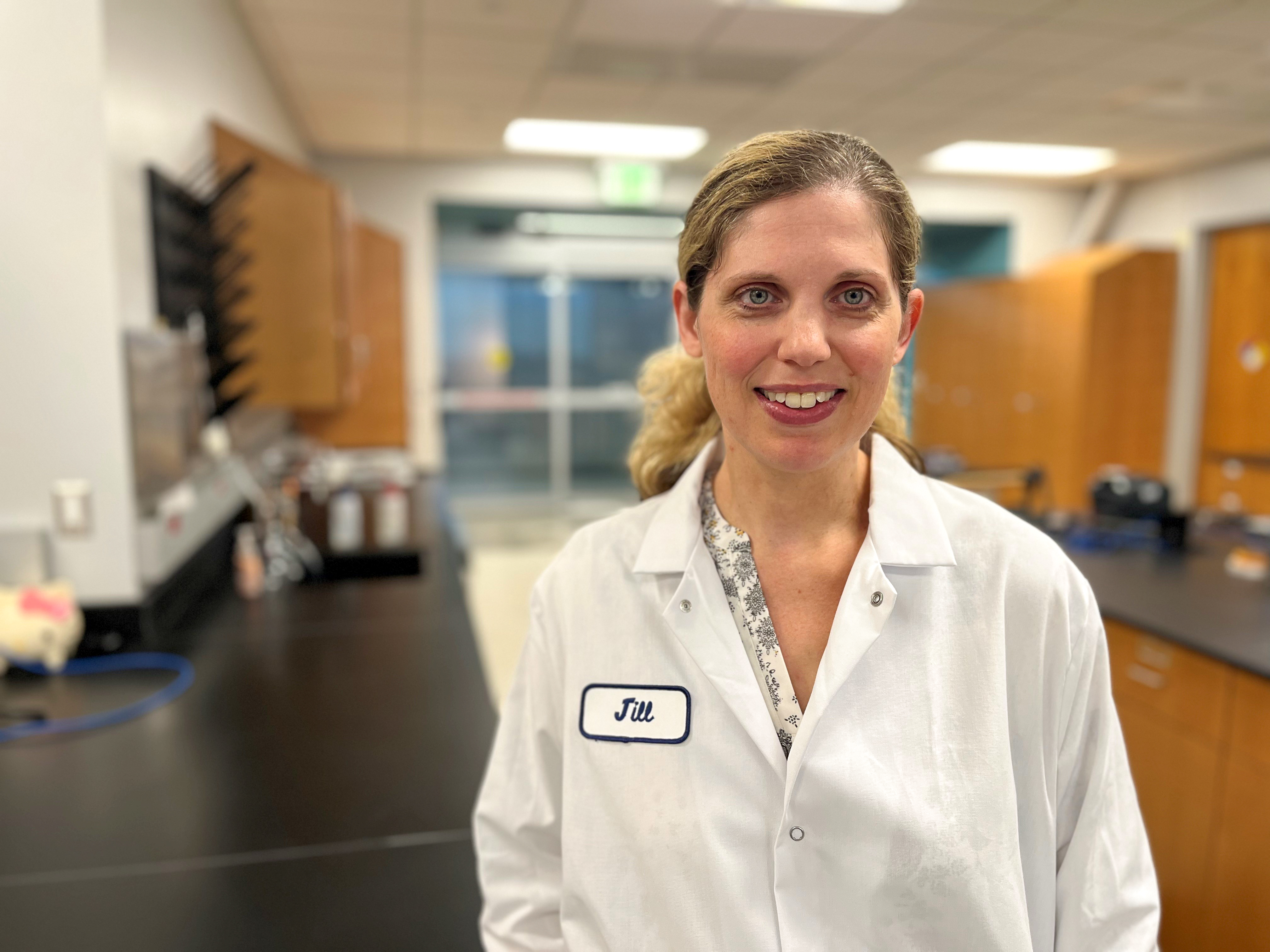Fingerprint Expert Makes Strong Impression at Crime Lab

#ForensicScienceWeek
It makes sense. If you work in the crime lab’s Latent Print section, you’re going to spend a lot of time searching for the unseen.
Analyzing a fingerprint impression and comparing it to another, in front of a computer screen, could take an hour, an afternoon, or even days.
That’s perfection for Jill Snyder, fingerprint expert. Since 2007, Snyder has worked at KCPD’s crime lab in the Latent Print Section. By way of Pennsylvania, Snyder landed in Kansas City with a forensic investigative science degree. Her work with prints and impressions is nothing short of intricate.
“Ever look at the bottom of your fingers?” Snyder asked. “There’s ridge detail. If you look closely, there are areas that are raised. We’re looking to see if there’s a duplication of the ridge detail on the surface. The ridges will flow in certain directions. They will form patterns, especially in your fingers. There are places where the ridges will stop and start. They’ll merge. Within that ridge flow, I’m looking to see if there’s enough in it to compare to a person.”
When there is enough to compare, the prints left at a crime scene might match or lead to a suspect. Other times, a body might be identified, giving families answers and closure.
Even with technology available, this craft requires a human element that is labor-intensive. Snyder and the lab can plug characteristics left from impressions into state and national databases.
“What the system sees is not the fingerprint itself, the detail, and flow. It sees the difference between markings. It brings back a list of people that says these dots are the closest to what your dots were, which is why you have to have an individual look at them because the system can’t tell you if it’s the same pattern.”
Snyder is her team’s Technical Lead, training team members and keeping them up-to-date on disciplines and new standards. She can also analyze tire track and footwear impressions from crime scenes, skills she learned during a nine-month training program when she saw that the crime lab needed more of these specific examiners.
To Snyder, the work fits the passion. She’s loved puzzles since she was a young girl. Big puzzles, those without edges, double-sided ones, same color patterns. The smallest details fascinated her, leading her to a profession immersed in them.
“It’s always a good feeling when you can help the community in some way,” Snyder said. “We (the lab) do this every day."
Learn more about the KCPD crime lab.